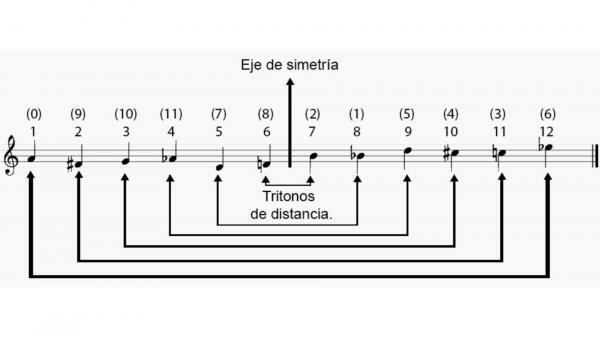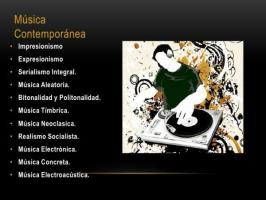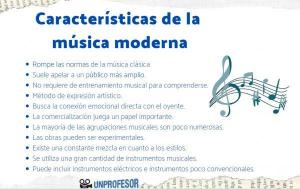DODECAPHONISM: characteristics and composers

When we study a discipline we are learning about all that knowledge that they have left us as a result of study and development of this for many years, the evolution it has had through history and all the secrets and reasons that are considered functional. Eventually, we tend to settle for the same knowledge, something that some exceptional characters notice and decide to explore to break with customs to create something new.
In this lesson from a TEACHER, we will learn about twelve-tone, its characteristics and composers, an artistic current at the beginning of the 20th century that sought to expand our use of sounds in musical composition and of the characters who dabbled in this notion.
Twelve-tone is a musical artistic current what happened to early 20th century, from the influence of free atonalism. Since Western music is composed practically under the tonal system that we know with certain relationships between the scale and the chords that emerge, this represented for some certain limitations that could be interesting when break. Therefore, some composers proposed a new way of approaching music, with new rules that did not depend on the hierarchy of notes, that is, that in twelve-tone no note is more important or basic structurally, but the 12 notes of the scale (the 7 notes plus the semitones) are treated equally. Hence the name of
twelve-tone, the 12 sounds of the full chromatic scale.Tonality is the system in academic music that takes a specific note on the scale as tonic or fundamental. This means that the rest of the notes in a scale and / or composition will depend on the harmonic structures based on this note. If you want to learn more about the Tonal music: definition and characteristics, you can click here. Also, if you want to know more about the Atonal music: characteristics and composers, enter here.

Some of the best known twelve-tone composers are as follows:
Josef Matthias Hauer (1883 - 1959, Austria)
In addition to being a composer, he was a music theorist, responsible for independently developing methods of twelve-tone, even before Schönberg, who later took it upon himself to evolve and proliferate the movement. Notable work: Nomos Op.19.
Arnold Schönberg(1874 - 1951, Austria)
Schönberg is considered the founder of dodecaphonism and several people claim that together with Igor Stravinsky, he was one of the most important composers of the 20th century. Schönberg was a pioneer in the world of atonal composition and in the use of techniques oftwelve-tone. He was also an important figure in music education, teaching notable composers such as Anton Webern, Alban Berg and John Cage. Notable work: Transfigured Night, The Wait.
Igor Stravinsky(1882 - 1971, Russia)
Thanks to the long life of Stravinsky he was able to highlight and experience through the ages the genre transitions and currents that occurred in the world of music, within which they highlight the primitivism, the neoclassicism and finally serialism. He was also a versatile composer, delving into various genres such as opera, symphony, solo piano pieces, and even more modern genres such as jazz. He was acclaimed, in addition to as a composer, as a pianist and conductor. Notable work: Petrushka, The Rite of Spring, The Firebird.
Anton Webern (1883 - 1945, Austria)
He was a disciple of Schöeberg and is considered one of the most important exponents of twelve-tone. Many praise Webern for the structures that he managed to create in his compositions, using the musical elements of rhythm, height and dynamics. This system eventually evolved and developed to form the foundations of the serialism, another musical current based on the repetition of these structures.Notable work:Rosen 1975, 102.
Alban Berg (1885 - 1935, Austria)
He was a student of Schönberg, which would influence his use of twelve-tone and atonal techniques. In addition, he also ventured into the styles of Romanticism and Expressionism. Notable work: Lyric suite for string quartet (1925), Lulú (1937).
Now that you know more about this topic, you can dabble in listening to the works of these wonderful composers. Doing this will give you a clearer and more complete picture of twelve-tone, while admiring the feats of creativity of these innovative characters.




